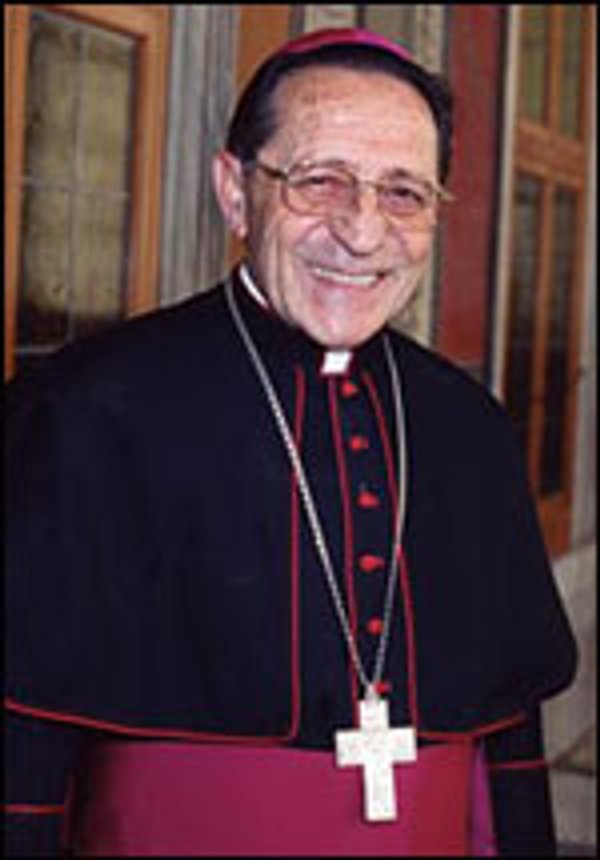Cardinal Julian Herranz was born on 31st March 1930. He joined Opus Dei in 1949 while studying medicine, and was ordained priest for Opus Dei on 7th Aug 1955; he holds a degree in Canon Law.
In 1960, he was called to serve in the Roman Curia regarding the discipline of the clergy. He subsequently served as President of the Pontifical Council for the Interpretation of Legislative Texts from 1994 to 2007, and was created and proclaimed Cardinal in 2003. He is considered one of the foremost experts on Canon Law. He retired in 2007 and continues to be Emeritus President of the Pontifical Council for the Interpretation of Legislative Texts.
In 2005, after the passing of Pope John Paul II, Cardinal Herranz published his memoirs of the years spent with St Josemaria and in the Vatican, especially when he worked with Pope John Paul II, in a book entitled “Outside the Walls of Jericho”. This article is an abstract this book.
At the time of St Josemaria’s passing, Cardinal Herranz was living in the centre of Opus Dei at Villa Tevere, adjacent to the apartments used by St Josemaria at the headquarters in Rome.
* * * * * * *
On 26th of June, I returned from the Vatican to Villa Tevere at the usual hour, a little before half past one in the afternoon. As soon as I arrived, the General Secretary alerted me:
“Come up at once. The Father is dying.”
My heart skipped a beat, and praying, I went up quickly. When I arrived at the second floor of the Father’s apartments, Villa Vecchia, Don Alvaro, who, in that moment, was standing outside the door of his office, told me:
“Come, come, because you, too, are a doctor.”

I entered immediately and found the Father, in his cassock, stretched out on the floor, with his face serene, but not breathing.
Jose Luis Soria, a priest and a doctor, had been giving him artificial resuscitation a few moments ago. We did this alternating between the two of us. We continued, giving the Father cardiac massage as well.
I did not know what had happened, but I supposed that the Father had suffered a cardiac arrest, which was what they later told me. I accepted the will of God, but I asked God not to take him so soon. As I was kneeling down, I asked our Lord with all my heart to accept an exchange: my life for the Father’s life. My life is worth little, I told Him. His life is necessary for everybody – his children, the Church, the whole of humanity.
And so, there we were, Jose Luis and I, for a long time, giving artificial resuscitation. Once, then again and again… in silence, with tears in our eyes, until we realized finally that it was useless to continue. All the clinical signs of death were there.
Don Alvaro and Javier Echevarría, who had accompanied and attended lovingly to the Father all these moments, formally communicated this saddest of news to the members of the General Council who were gathered in the adjacent room. He also telephoned the women of the Central Advisory. In both cases, he also gave them the opportune advice of filial piety and of government.
We immediately transferred the body of the Father to the Oratory of Our Lady of Peace.
Some hours later, I was praying before the Father’s body, dressed in the vestments of a priest. Among many other warm memories, what came to my mind was something that the Father had confided to us, one Christmas day in 1953, close to the fire of the chimney of the living room.
He told us that he wanted to write a book about a donkey, that biblical animal that he liked to identify with so much, because it had given warmth to Jesus in Bethlehem and because it had carried Him in triumph into Jerusalem. An animal that men don’t usually esteem but which the Father had set as an example for us — an example of humility, of endurance in work, and of fidelity in that battle of peace and love that his children in Opus Dei and all Christians are called to spread throughout the world. If he had had time to write that book, he told us he would entitle it “ The Life and Adventure of the Donkey at the Water Wheel ”.
God took the Father to Himself before he could complete the book. But some passages remain, collected from his conversations, of which some bear corrections in his own hand. They commented on the scenes of the donkeys which he has asked to be carved as a base-relief decoration on the back of the seats in the Oratory of Pentecost. Those scenes are a symbol of his life. Among the many marvels of the “theology of the donkey”, one reads: “The donkey would like to have lived until Christmas to warm the Child once more with its breath. Yet in a way it was present, in the great joy of that night, for angels came and made from its hide tambourines and little drums.”
The story of the donkey has a happy ending: it dies working. And then it lets them take it apart, skin it and make drums: “big ones for war and little ones for singing to the God-Child.”
That was how the Father died.
